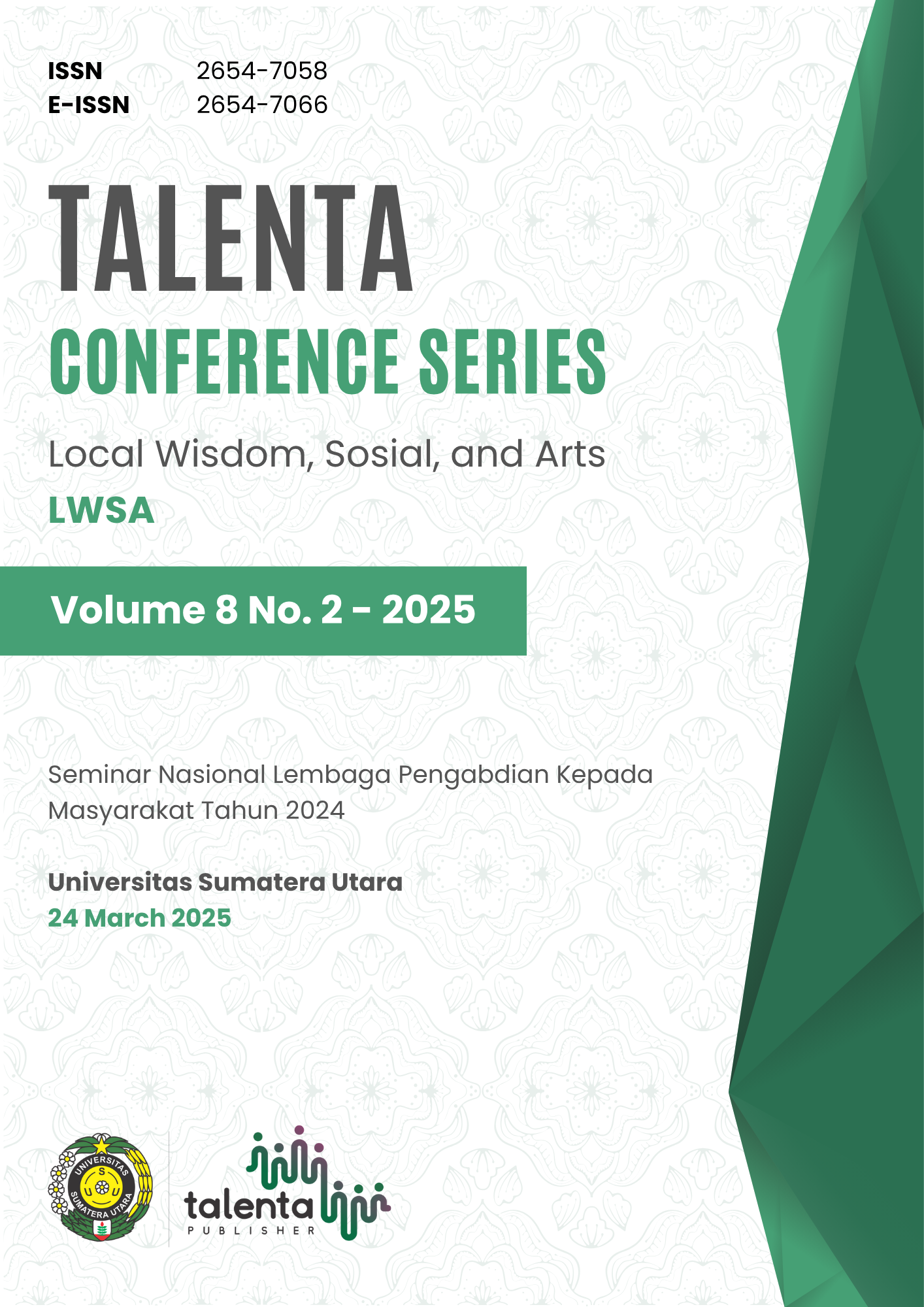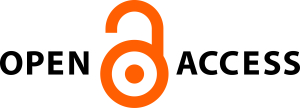Praktik Pemberian Makan Ibu pada Balita sebagai Pencegahan Stunting di Wilayah Kerja Puskesmas Bandar Dua Kabupaten Pidie Jaya
Enhancing the Resilience and Marketing of ”Lokana ”MSME Products: The Role of Technology and Innovation
| Authors | ||
| Issue | Vol 8 No 2 (2025): Talenta Conference Series: Local Wisdom, Social, and Arts (LWSA) | |
| Section | Articles | |
| Section |
Copyright (c) 2025 Talenta Conference Series  This work is licensed under a Creative Commons Attribution-NonCommercial-NoDerivatives 4.0 International License. |
|
| Galley | ||
| DOI: | https://doi.org/10.32734/lwsa.v8i2.2428 | |
| Keywords: | Balita Perilaku ibu Praktek Pemberian makan Stunting Toddlers Maternal behaviour Feeding Practices | |
| Published | 2025-03-07 |
Abstract
Prevalensi stunting di Aceh tergolong buruk, karena melebihi ambang batas standar WHO sebesar 20%. Kabupaten Pidie periode Juli 2022 mencatat total 1.336 kasus stunting. Tujuan pencapaian SDGs dalam PkM ini adalah tujuan (3). menjamin kehidupan yang sehat dan meningkatkan kesejahteraan penduduk di segala usia. Tujuan penelitian adalah untuk mengetahui perilaku ibu dalam praktik pemberian makan pada balita untuk mencegah stunting. Desain penelitian yang digunakan adalah deskriptif. Teknik pengambilan sampel adalah purposive sampling. Jumlah sampel 20 orang. Hasil penelitian ibu selalu bertanggung jawab dalam menentukan takaran porsi makan (100%), selalu pantau makanan manis dan tinggi lemak yang dimakan anak (100%).
The prevalence of stunting in Aceh is classified as bad, because it exceeds the WHO standard threshold of 20%. Pidie Regency for the July 2022 period recorded a total of 1,336 stunting cases. The goal of achieving SDGs in this PkM is goal (3). ensure a healthy life and improve the welfare of the population at all ages. The purpose of the research is to determine mothers' behavior in feeding practices for toddlers to prevent stunting. The research design that has been used is descriptive. The sample collection technique used was purposive sampling. The number of samples was 20 people. Research results: Mothers are always responsible for determining food portion sizes (100%), always monitor the sweet and high-fat foods their children eat (100%).






